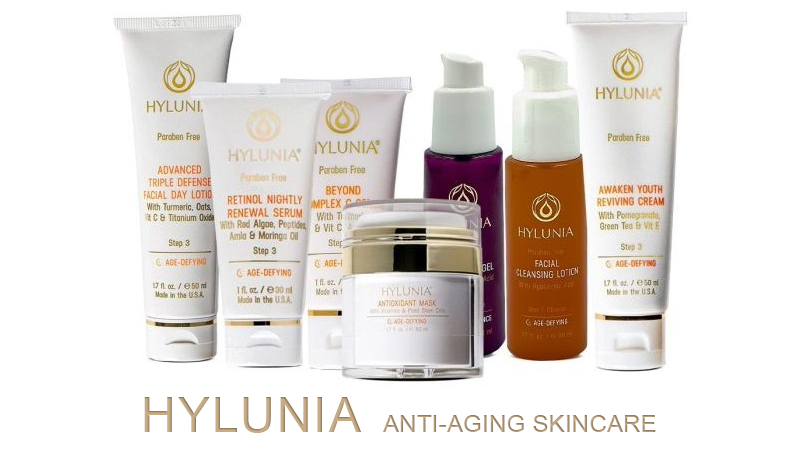
We’ve all been told to use a good moisturizer to keep skin soft and hydrated. But if your skin still feels dry, flaky, or tight, you’re not alone. Sometimes, moisturizing alone just isn’t enough to give your skin the deep hydration it craves. Building a routine that focuses on locking in moisture, attracting hydration, and strengthening your skin barrier can make all the difference.
Contents
Understanding Skin Hydration vs. Moisturization
Before jumping into products, it helps to know the difference between hydration and moisturization. While the terms are often used interchangeably, they’re not quite the same.
Hydration: Feeding Your Skin Cells
Hydration refers to increasing water content in your skin cells. Hydrated skin cells look plump, smooth, and give your skin a glowing appearance. Think of hydration as giving your skin a glass of water—it’s essential for keeping skin cells happy and bouncy. Ingredients like hyaluronic acid and glycerin help draw water into the skin.
Moisturization: Locking It All In
Moisturization, on the other hand, is about sealing in that hydration so it doesn’t escape. Moisturizers contain occlusive ingredients like oils and butters that form a protective layer on the skin’s surface, preventing water loss. In short, hydration is about adding water, and moisturization is about keeping it there.
So, while a good moisturizer is important, building a truly hydrating routine requires steps that attract water to the skin and lock it in.
Step 1: Start with a Gentle Cleanser
Hydration starts at the very first step of your skincare routine: cleansing. A harsh cleanser can strip your skin of natural oils, which leaves it dehydrated and vulnerable to moisture loss. Using a gentle, hydrating cleanser can help your skin retain its moisture right from the start.
Choosing a Hydrating Cleanser
Look for cleansers with mild, non-foaming formulas. Ingredients like glycerin, aloe vera, and chamomile are soothing and hydrating. Avoid cleansers with sulfates, which can strip your skin’s natural oils and make it feel tight and dry.
Cleansing Tips for Dry Skin
Use lukewarm water instead of hot water, which can dehydrate your skin. Gently pat your skin dry with a towel, leaving a little dampness behind. This helps prep your skin to absorb the hydrating products you’ll be applying next.
Step 2: Apply a Hydrating Toner or Essence
After cleansing, using a hydrating toner or essence can give your skin a quick hydration boost. These lightweight products are packed with humectants—ingredients that attract water to the skin and help lock in moisture.
Benefits of a Hydrating Toner
Unlike traditional astringent toners, hydrating toners are designed to replenish moisture, not remove oil. They balance the skin and help restore any lost hydration after cleansing. Look for ingredients like hyaluronic acid, glycerin, and aloe vera in your toner.
- Hyaluronic Acid: Known for its ability to hold up to 1000 times its weight in water, making it a hydration powerhouse.
- Glycerin: A gentle humectant that helps pull moisture into the skin.
- Aloe Vera: Naturally soothing and hydrating, great for calming and refreshing the skin.
How to Apply Toner or Essence
After cleansing, pour a small amount of toner into your hands or onto a cotton pad and gently pat it onto your face. Let it absorb fully before moving on to the next step. Applying products while your skin is still slightly damp helps them sink in more effectively.
Step 3: Use a Hydrating Serum
Serums are highly concentrated and penetrate deeper than moisturizers, making them a crucial step in your hydration routine. A good hydrating serum acts like a direct infusion of moisture to your skin’s deeper layers.
Key Ingredients in Hydrating Serums
- Hyaluronic Acid: Again, this ingredient is a superstar for pulling water into the skin, making it plumper and smoother.
- Panthenol (Pro-Vitamin B5): This vitamin has humectant properties that help skin hold onto moisture.
- Sodium PCA: A naturally occurring component of skin that helps bind moisture to skin cells.
Apply a few drops of your serum to your face and neck, gently patting it in. Give it a minute to absorb before moving to the next step. A good serum can make a noticeable difference in skin hydration and texture, especially in dry climates or during colder months.
Step 4: Seal with a Moisturizer
Once your skin is fully hydrated, it’s time to seal in all that moisture with a moisturizer. This step ensures the water doesn’t evaporate, leaving your skin dry again. A good moisturizer also strengthens the skin barrier, helping it retain moisture over time.
Choosing the Right Moisturizer
Look for moisturizers with occlusive ingredients like shea butter, squalane, or natural oils like jojoba and argan. These ingredients create a barrier that locks in hydration, preventing water loss. If you have oily skin, go for a lightweight, non-comedogenic moisturizer that won’t clog pores.
For those with extremely dry skin, a richer, creamier moisturizer may be more effective at keeping hydration locked in. Consider using a night cream with ceramides or fatty acids, as these ingredients repair and strengthen the skin barrier overnight.
Step 5: Consider Using a Facial Oil
Facial oils can be an optional, yet powerful addition to a hydration-focused routine. Oils don’t necessarily hydrate on their own, but they act as a final layer to seal in all the moisture from previous steps.
Benefits of Adding an Oil
Oils are great for those with dry or mature skin, as they provide an extra layer of protection. They also give the skin a beautiful glow and smooth out the appearance of fine lines. Facial oils with ingredients like rosehip oil, jojoba oil, and marula oil work well to nourish and protect the skin.
How to Apply Facial Oil
Apply a few drops to your face after your moisturizer has absorbed. Gently press the oil into your skin to avoid disrupting the layers underneath. You can use oils at night or even mix a drop into your moisturizer for an extra hydration boost during the day.
Extra Tips for Deeply Hydrated Skin
Building a deeply hydrating routine is a great start, but there are a few more steps you can take to keep your skin moisturized and happy all day long.
Use a Humidifier
Indoor heating and air conditioning can dry out your skin, especially during winter. Using a humidifier in your room adds moisture to the air, which can help prevent your skin from becoming dehydrated overnight.
Drink Plenty of Water
Hydration starts from the inside out, so make sure you’re drinking enough water each day. While skincare products can help, nothing beats proper hydration for keeping skin looking and feeling its best.
Avoid Harsh Ingredients
Certain ingredients, like alcohol and fragrances, can strip your skin of moisture. Stick to gentle, hydrating products that support your skin’s natural moisture balance.
By layering hydrating products, protecting your skin barrier, and supporting hydration from the inside out, you can create a routine that leaves your skin feeling deeply nourished and plump. With a little consistency, these small steps can add up to big results in how hydrated and healthy your skin looks and feels.

